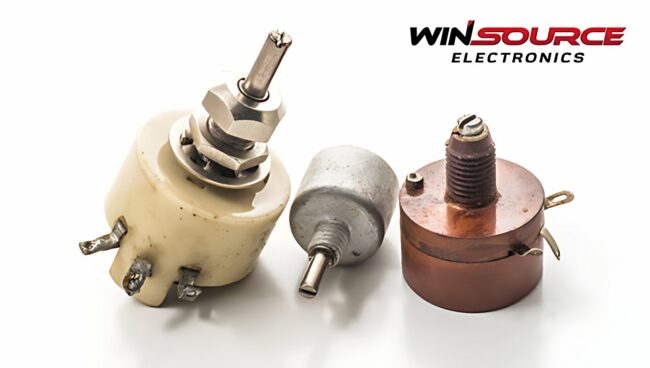
Table of Contents
ToggleThe basic principle of rheostat
The structure of the rheostat
Rheostats usually consist of an adjustable sliding resistor with two fixed terminals. A sliding resistor is a movable connector that can be slid between two fixed terminals to change the resistance value. By adjusting the position of the sliding resistor, the total resistance value in the circuit can be changed.
How Rheostats Work
The working principle of a rheostat is based on the relationship between resistance and current. According to Ohm’s law, the relationship between resistance R and current I is R = V/I, where V is the voltage. By changing the position of the sliding resistor, the resistance value R in the circuit can be changed, thereby affecting the values of the current I and the voltage V. In this way, precise adjustment of the resistance value in the circuit can be achieved.
The function of the rheostat
Resistance adjustment
The most basic function of a rheostat is to adjust the resistance value in a circuit. By adjusting the position of the sliding resistor, the total resistance value in the circuit can be changed, thereby realizing precise adjustment of the resistance of the circuit. This is very important in circuit design and practical applications, because different circuits require different resistor values to meet specific requirements.
Voltage divider
A rheostat can be used as a voltage divider to divide the input voltage into different proportional outputs. By adjusting the position of the sliding resistor, the voltage division ratio can be changed to obtain the desired output voltage. This is often used to control the magnitude of the voltage in the circuit, such as adjusting the gain of the circuit or providing a specific voltage level for other circuit modules to use.
Current limit
The rheostat can be used to limit the magnitude of the current. By connecting the rheostat to the circuit, the resistance value in the circuit can be adjusted to limit the flow of current. This plays an important role in electronic circuit protection and power control to ensure that the current in the circuit is within a safe range.
Signal conditioning
Rheostats can be used to adjust the size and strength of the signal. By adjusting the resistance value in the circuit, the amplitude and power of the signal can be changed, so as to realize the precise adjustment of the signal. This is common in applications such as audio equipment, modulators, and demodulators, where parameters such as volume, signal strength, and frequency can be adjusted.
Temperature compensation
Rheostats can also be used for temperature compensation in some special applications. Since changes in temperature will affect the performance of electronic components, the use of temperature sensing elements (such as thermistors) combined with rheostats can be used to compensate for temperature changes in the circuit. This is very important in precision measurement and automatic control systems, which can improve the stability and accuracy of the system.
Application scenarios of rheostats
Electronic equipment regulation
Rheostats are widely used in various electronic devices, such as audio amplifiers, electronic mixers, electronic game consoles, etc. By adjusting the resistance value, it is possible to precisely adjust parameters such as volume, brightness, and contrast of the electronic device.
Sensors and Measuring Instruments
Rheostats play an important role in sensors and measuring instruments. For example, in a temperature sensor, by adjusting the resistance value of the rheostat, the sensitivity and response range of the sensor can be calibrated. In current measuring instruments, rheostats can be used to accurately measure and control the magnitude of current.
Automatic Control System
Rheostats are widely used in automatic control systems. For example, a rheostat in a dimming light control system can be used to adjust the brightness of a light. In the temperature control system, the precise control of the temperature can be realized by adjusting the resistance value of the rheostat.
Communication Systems
Rheostats also have important applications in communication systems. For example, it is used to adjust the gain and attenuation of the signal to maintain the proper strength of the signal during transmission. In radio and television receivers, rheostats are used to adjust the strength and quality of the received signal.
Laboratory Research and Education
Rheostats are widely used in laboratory research and education. It can be used to build various circuit prototypes and experiments, observe and analyze the behavior and performance of the circuit by adjusting the resistance value. In teaching experiments, rheostats are also an important tool for students to learn circuit principles and adjustment skills.
In conclusion, as an important electronic component, rheostat plays a key role in circuit design and practical application. By in-depth understanding of its basic principles, functions and application scenarios, we can better use rheostats to achieve precise adjustment and control of circuits, and promote the development and innovation of electronic technology. At the same time, the application of rheostats also provides us with more opportunities for experimentation and teaching, and deepens the understanding of circuit principles and adjustment techniques.

COMMENTS